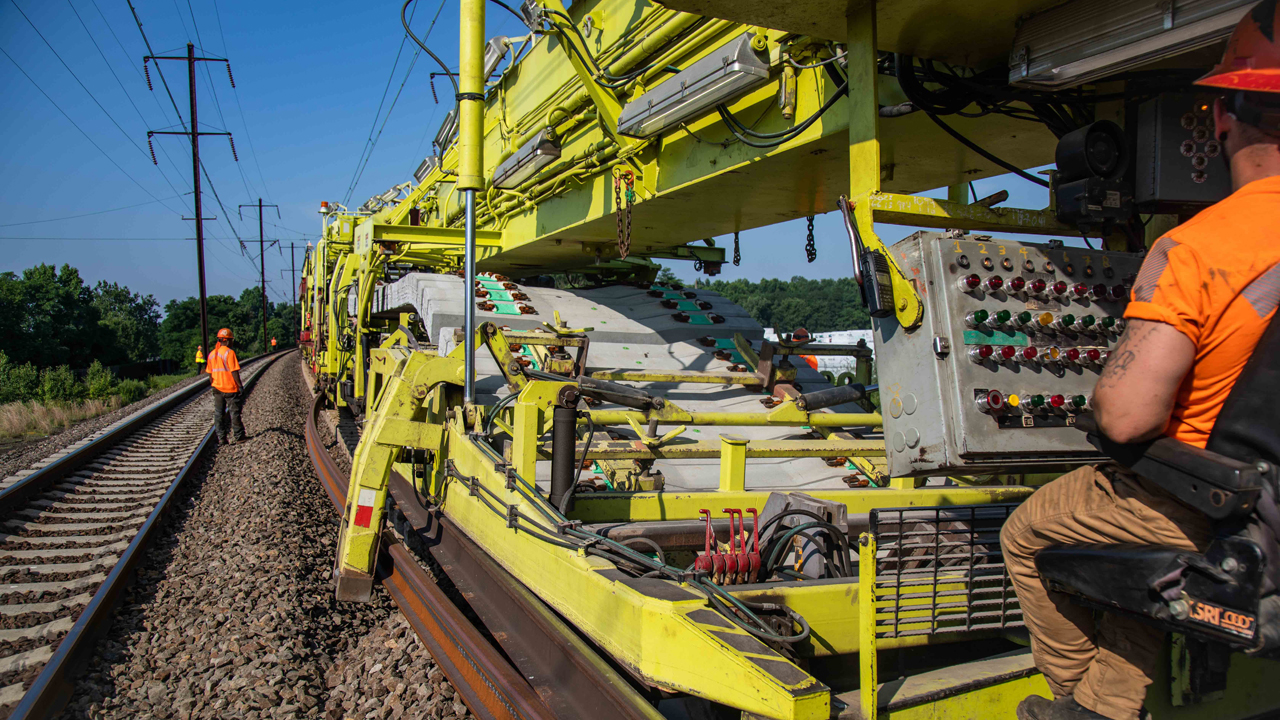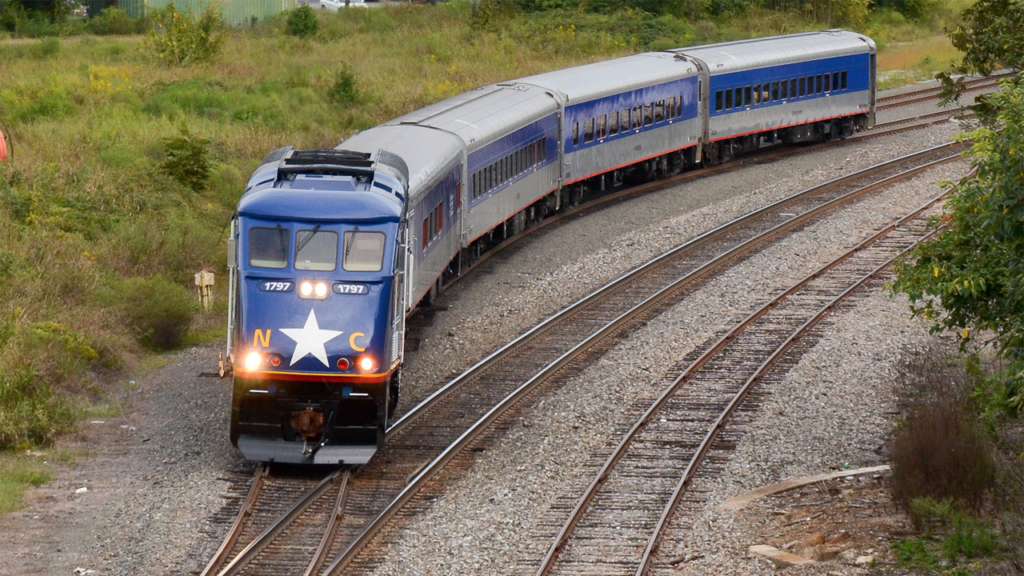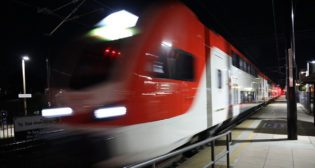
For Amtrak, 4 Challenges to Implementing IIJA Funds: OIG
Written by Marybeth Luczak, Executive Editor
Ties and rails from the operator's view
Amtrak will face four main challenges as it modernizes and expands service with a minimum of $22 billion in Infrastructure Investment and Jobs Act (IIJA) funding, according to the Amtrak Office of Inspector General (OIG).
IIJA, signed into law Nov. 15, 2021, could start delivering funds to Amtrak later this fiscal year.
Pulling from a body of audits and investigations, OIG’s latest report (download below) credited the railroad with “making significant [program and operational] progress in the past decade,” but noted that “the sheer size of the IIJA’s funding and requirements presents a potential strain on the company’s ability to manage its current operations while concurrently planning and managing a long-term multibillion-dollar infrastructure portfolio.”
In addition to safety—an “overarching point of emphasis” at all level’s of the Amtrak organization—OIG cited four areas of Amtrak management focus that will be “foundational to the success of the company’s IIJA-funded projects and to the future health of its core operations.” They are:
1. “[D]emonstrating fiscal responsibility, including transparently and accurately accounting for IIJA funds.” Amtrak is now working with the Federal Railroad Administration (FRA) to develop tools and reports that will provide the appropriate detail and transparency, according to OIG. At the same time, however, many of the company’s systems supporting fundamental business practices—such as its asset management, incident reporting, and workforce scheduling systems—are outdated and do not provide timely and high-quality information, it said. Amtrak has begun upgrading some of these systems and can use IIJA funds to accelerate them, OIG noted. Additionally, Amtrak must protect IIJA funds from “fraud, waste and abuse” and continue to implement and enforce more disciplined capital planning processes.
2. “[B]uilding a skilled workforce to plan and execute IIJA projects.” Amtrak plans to expand its workforce by as much as 21% in 2022, including hiring some 750 new managers to lead IIJA-funded projects and at least 2,176 skilled agreement employees to execute them, according to OIG. The challenge will be to grow the workforce to keep pace with project demands in the face of a tight labor market, it noted. Additionally, as the “volume of work grows under IIJA, the company will also need to closely monitor and balance its managers’ workloads to make sure that overtasking does not undermine program goals or lead to further attrition,” OIG reported.

3. “[W]orking collaboratively with partners to achieve common IIJA goals.” Amtrak’s operations and finances depend in significant part on cooperation, coordination and support from an array of external and internal stakeholders—state partners, commuter rail agencies, local governments, regional working groups, freight rail companies, FRA, Congress, and its own internal departments, according to OIG. While Amtrak has experienced mixed success managing these relationships in the past, collaborating effectively with external partners “will be a necessary precursor to 1) successfully accessing funding from various Department of Transportation grant programs, like the Federal State Partnership for Intercity Passenger Rail grant program, 2) facilitating future route expansion, and 3) prioritizing billions of dollars of capital improvements on Amtrak’s Northeast Corridor,” reported OIG. It noted that “a significant number of state partners cited concerns about the fairness and accuracy of the company’s practices for billing them for their share of costs … undermining some states’ trust in the company. Going forward, the company will need to focus on rebuilding this trust if it is to optimally access and successfully execute projects funded by the partnership grant programs.” OIG also found in past work that Amtrak has not coordinated internally across the company as early and comprehensively as needed. This approach is important, OIG said, because it “can help Amtrak set realistic schedules by obtaining input on the availability of the relevant departments to support the project needs with staff and other resources.”
4. “[I]mproving program and project management for IIJA endeavors.” According to OIG, “Amtrak recognizes its challenges in this area and has made progress toward bringing structure and discipline to the project management function.” For example, it recently established a new Capital Delivery department to manage the planning and implementation of major programs and projects—an area where OIG said it has identified weaknesses over the past decade. Amtrak also created an enterprise-wide program management office, issued management standards, developed trainings and certifications for managers, and took actions to address prior findings, OIG reported. However, OIG noted that Amtrak has not always sustained these efforts, and its program management success has been mixed. Considering the breadth and scope of projects that the IIJA will generate, Amtrak will need to “continue to pursue rigorous program and project management” by focusing on early program and project planning, providing adequate resources in terms of knowledgeable and skilled staff, and holding managers accountable for project delivery, OIG said.
Amtrak Responds
In response to the report findings, Amtrak told Railway Age: “We appreciate the OIG’s efforts to help us prepare for the historic investments made possible by the IIJA. We have a once-in-a-generation opportunity to reimagine routes, modernize infrastructure and invest in improving passenger rail. We are ready to tackle challenges and seize on this opportunity to deliver a more convenient, sustainable and equitable transportation option for this country.”
For details on Amtrak’s plans for leveraging IIJA, read: “More Than a Wish List.”



